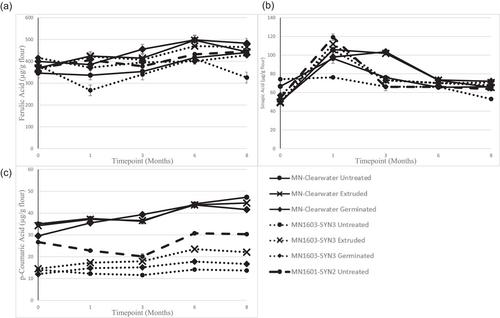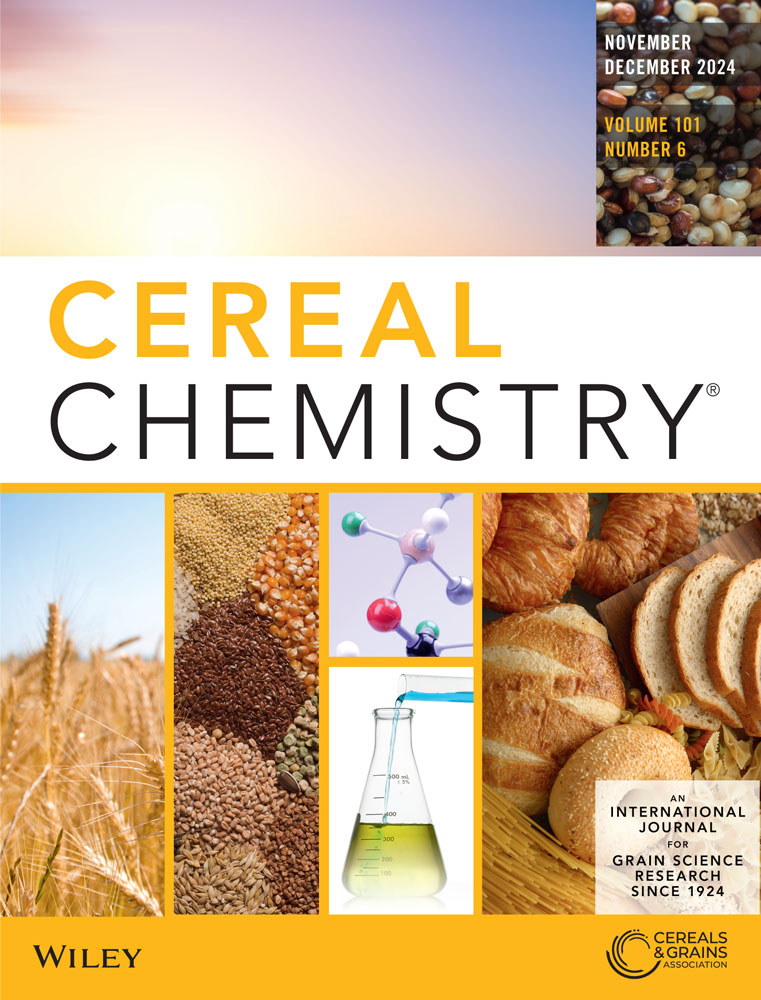Impact of processing and storage on rancidity markers in commercial and novel cultivar candidates of intermediate wheatgrass (Thinopyrum intermedium)
Abstract
Background and Objectives
Breeding of intermediate wheatgrass (Thinopyrum intermedium, IWG) culminated in the release of a commercial cultivar (MN-Clearwater) with attractive environmental and nutritional benefits. Determining the impacts of ambient storage and common postharvest processing on the stability of IWG flour is essential to promote it as a food ingredient. Accordingly, MN-Clearwater and two other potential cultivars, selected for their unique chemical composition, were subjected to extrusion and germination followed by 8 months of storage. Antioxidants, lipase and lipoxygenase activity, free fatty acid (FFA), peroxide value (PV), and volatile odor compounds (VOC) were analyzed at different timepoints.
Findings
While germination caused a significant increase in lipase activity (~threefold in MN-Clearwater), extrusion resulted in complete lipase degradation. Additionally, lipase activity was more consequential to hydrolytic rancidity than fat content. Regardless, results indicated that the endogenously abundant antioxidants can combat rancidity facilitated by enzymes and autoxidation as evidenced by significant losses in carotenoids between 3 and 6 months of storage (with 70%–80% reduction after 6 months of storage), when steep increases in FFA (up to 40% oleic acid/100 g fat), PV (two-fourfolds increase after 6 months of storage), and VOC (hexanal and 2-pentyl-furan) occurred.
Significance and Novelty
The findings of this work serve as an impetus for IWG breeding advancements since enzymes and antioxidants can be traits that breeders may consider when selecting cultivar candidates. Results can be also utilized to understand the impact of postharvest processing of the grain on the storage stability of its flour.


 求助内容:
求助内容: 应助结果提醒方式:
应助结果提醒方式:


